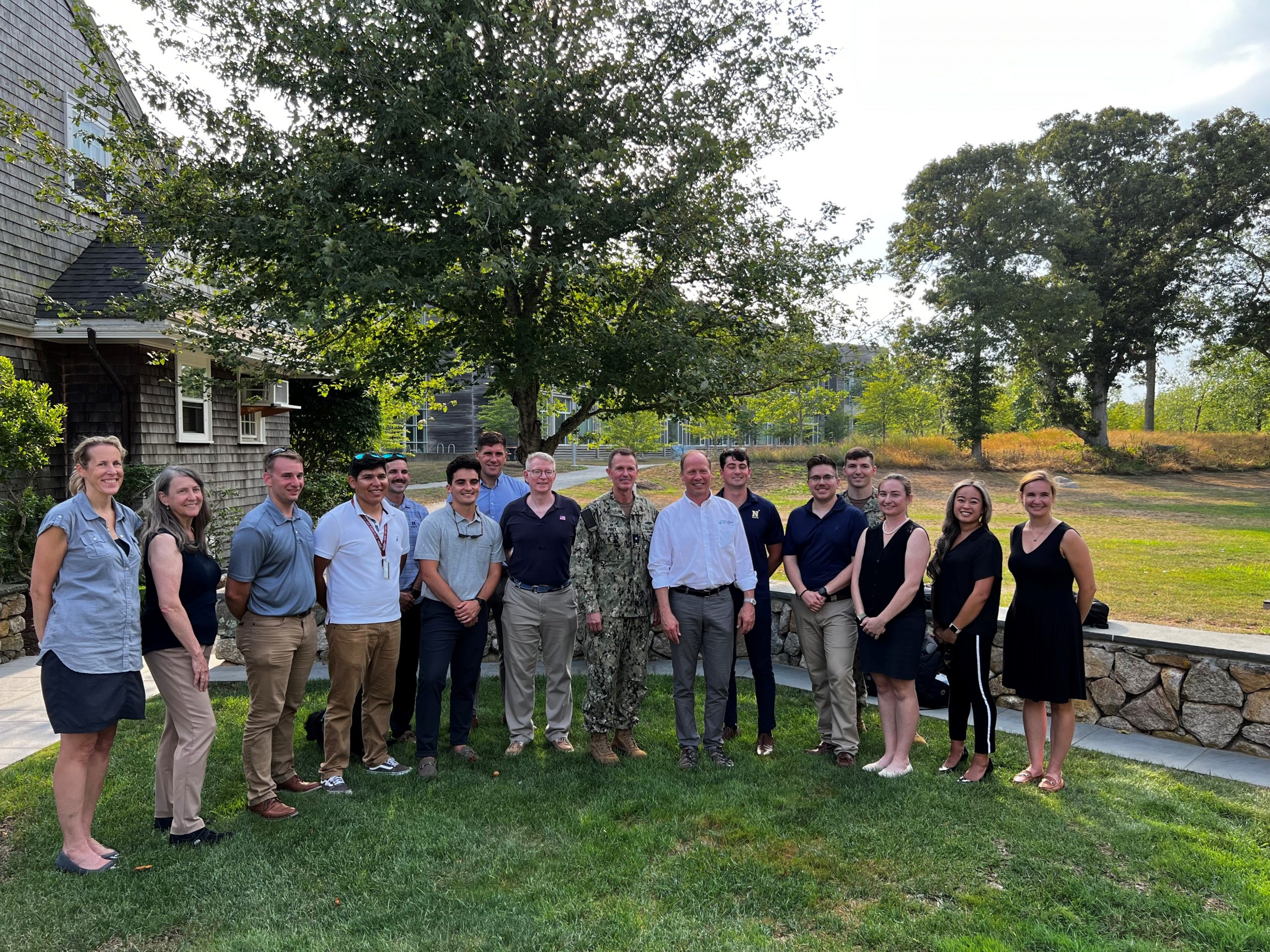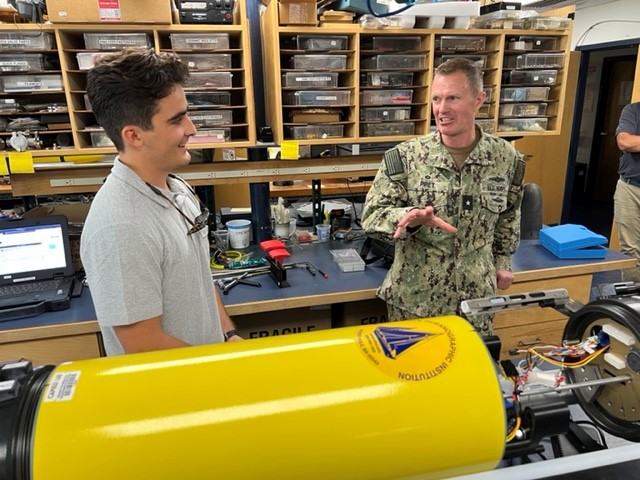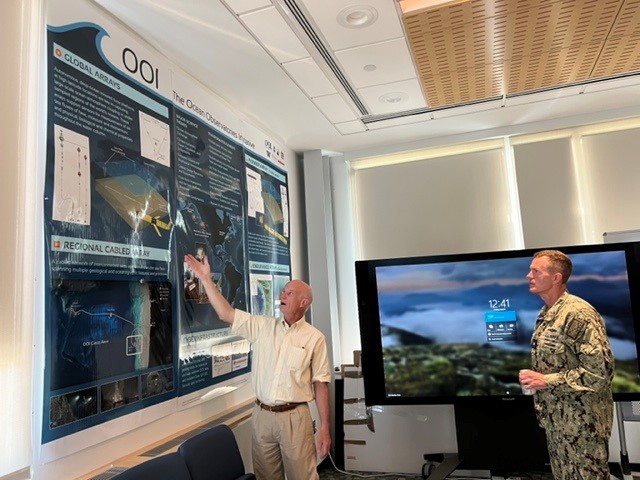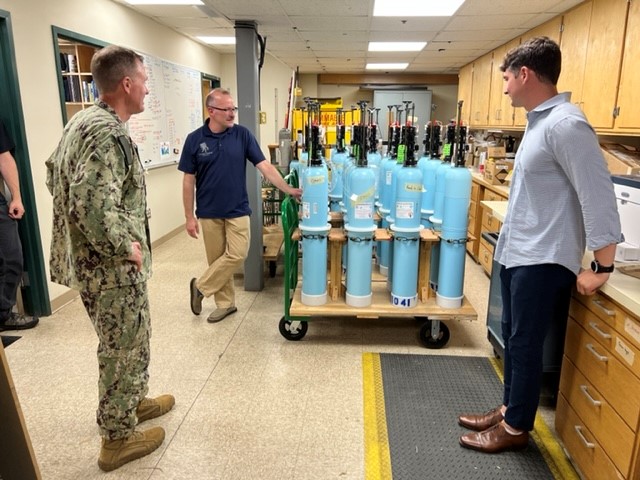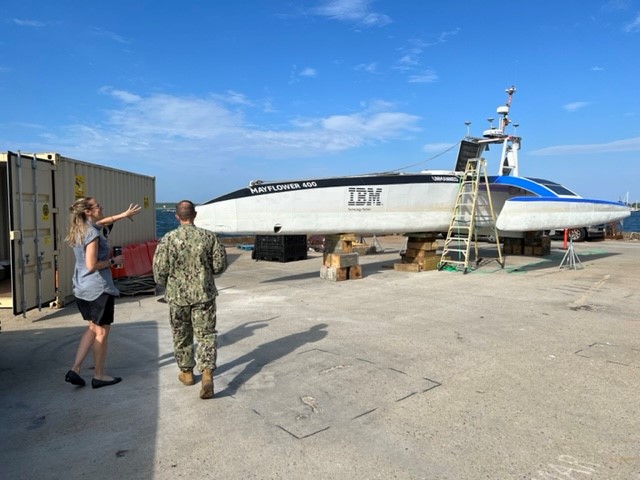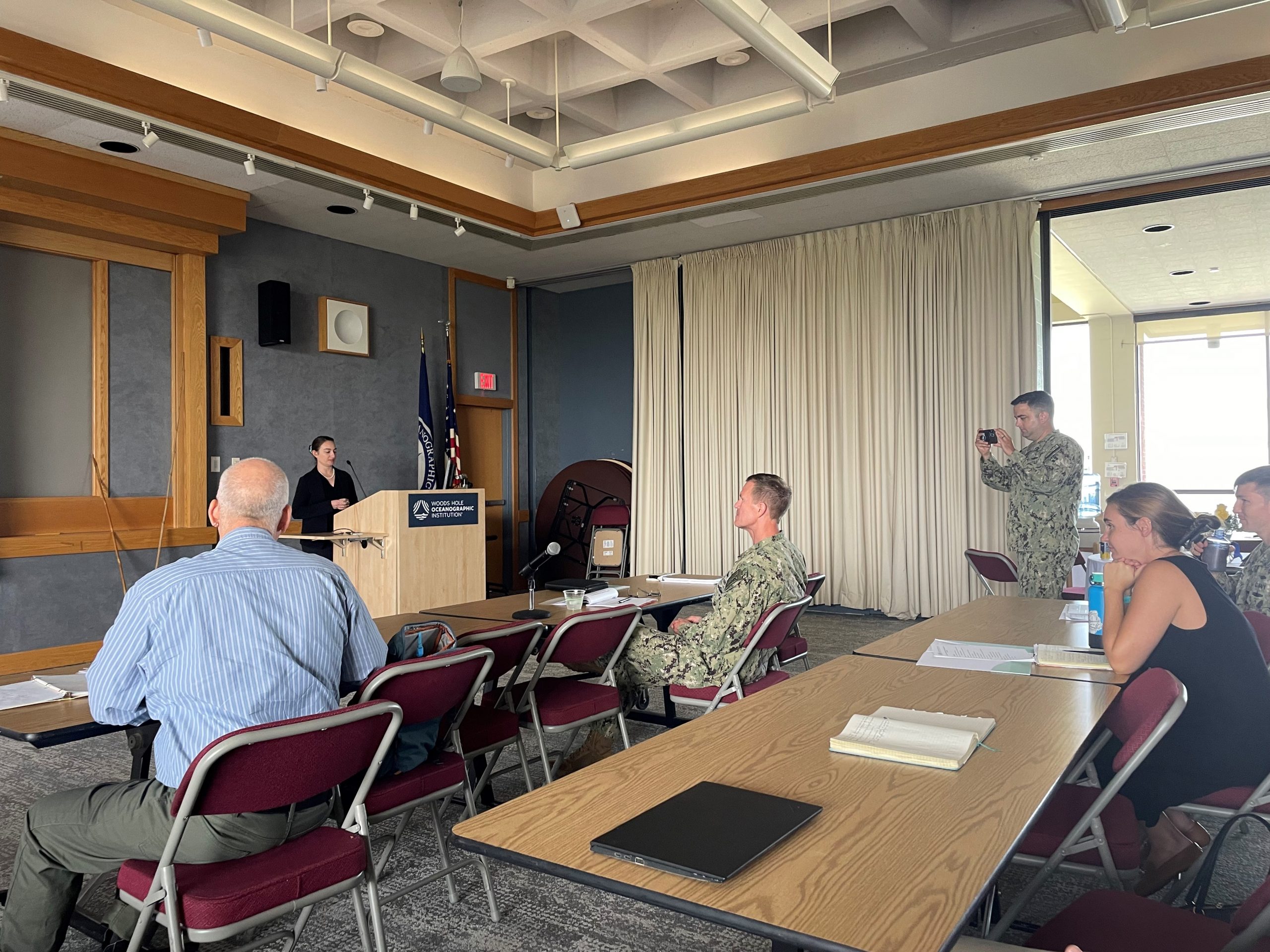Navy Program
The Joint Program offers a master’s degree program for U.S. Naval Officers, and more than 85 officers have received this degree dating back to the first award in 1970. The U.S. Navy manages the initial application process for Naval Officers prior to consideration by the Joint Program.
The Navy application process is detailed in a naval message released each June/July.
The application deadline for U.S. Naval Officers is October 1.
Applications are submitted online (see How to Apply and Navy (SM) Online Application).
Naval Officers can be considered for admission to the master's degree program in either two discpines: the Applied Ocean Science and Engineering (JCAOSE) and Physical Oceanography (JCPO). The master's degree program is suitable for motivated students with undergraduate degrees in geoscience, physics, chemistry, mathematics, or engineering. The program is designed to be completed in 27 months (two years and a summer). The first year, students matriculate in June and begin research with an advisor before taking classes in September. In the second year, the student conducts research and thesis work, culminating in a SM thesis. This must be signed off by the advisor and either the JCAOSE or JCPO chair. Within the PO discipline, it is recommended to give a public presentation of the work.
1. For consideration by JCAOSE, applicants choose the Mechanical Engineering option. Program requirements are (with A or B grades):
- Degree in engineering or physical sciences
- Undergraduate preparation in:
- Mathematics (through differential equations, advanced courses recommended)
- Physics (one year)
- Upper-level courses in specialty
- GRE scores not required
- Letters of recommendation, including academic references
2. For consideration by JCPO, program requirements are:
- Degree in mathematics or physical sciences.
- Undergraduate preparation required as prerequisites for Joint Program course 12.800: Equivalent courses to MIT courses 8.03, 18.03 and 18.04 (with A or B grades):
- MIT 8.03. Physics III. Mechanical vibrations and waves; simple harmonic motion, superposition, forced vibrations and resonance, coupled oscillations, and normal modes; vibrations of continuous systems; reflection and refraction; phase and group velocity. Optics; wave solutions to Maxwell's equations; polarization; Snell's Law, interference, Huygens's principle, Fraunhofer diffraction, and gratings.
- MIT 18.03. Differential Equations. Study of differential equations, including modeling physical systems. Solution of first-order ODEs by analytical, graphical, and numerical methods. Linear ODEs with constant coefficients. Complex numbers and exponentials. Inhomogeneous equations: polynomial, sinusoidal, and exponential inputs. Oscillations, damping, resonance. Fourier series. Matrices, eigenvalues, eigenvectors, diagonalization. First order linear systems: normal modes, matrix exponentials, variation of parameters. Heat equation, wave equation. Nonlinear autonomous systems: critical point analysis, phase plane diagrams.
- MIT 18.04. Complex Variables with Applications. Complex algebra and functions; analyticity; contour integration, Cauchy's theorem; singularities, Taylor and Laurent series; residues, evaluation of integrals; multivalued functions, potential theory in two dimensions; Fourier analysis, Laplace transforms, and partial differential equations.
- GRE scores not required
- Letters of recommendation, including academic references
Other Information
Navy students are required to conduct research at WHOI for one summer. AOSE students generally live near MIT at least for their first year, because most of their initial classes will likely be taught at MIT.
Summer and transient housing for JP students residing in Woods Hole is guaranteed; family housing is subject to availability.
Check with the WHOI housing office at housing@whoi.edu for details.
Deferral by one year is an option with approval of Navy and Associate Dean.

